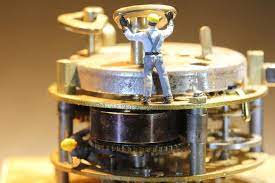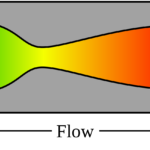Commonly used in microelectronics, transportation and telecommunications, micromachines play an already important role in our lives that will soon become even more prominent in the future.
Introduction
Microelectromechanical systems (MEMS), also popularly referred to as micromachines or transducers, are not so easy to define. The most general definition requires that at least one dimension of a micromachined device be in the micrometer range. The fabrication of micromachines(micromachining) is also closely related to nanotechnology and it won’t take long before the production of nanomachines (devices in the nanometer range – molecular machines), is initiated as well. However, micromachining is still in its infant stage and is mostly focused on the surface modification and treatment of materials for the various applications described below.
Communication and Transportation
Most of the machines used in transportation and telecommunication rely on the use of accelerometers. These are instruments that measure acceleration forces. Accelerometers are integrated into complex navigation devices for aircraft, missiles, other weapon systems, and in simple everyday devices like our cell phones and alarm motion detectors or vehicles (airbag deployment in cars). Although they are already in use, micromachining aims to make them smaller, cheaper, and even more sensitive. The same rule applies to memories and batteries. These enhancements will boost device performance, especially in the demanding areas of satellite systems, ground control systems, and aerospace technology.
Biomedicine
MEMS used as biosensors are already in the spotlight of development. Their main purpose is to identify a specific chemical compound (protein, enzyme, DNA) and interact with it, within a given chemical environment. One of the most common techniques, involves the adsorption of the compound molecule on the nanostructured surface of the biosensor and the measurement of the biosignal (current, heat, light, etc.) generated from the molecule-sensor interaction. Such biosensors can detect pathogenic organisms and help in cholesterol and arteriosclerosis prevention. Bio-MEMS that are made up of biocompatible materials can be used in the medical implant industry or serve as drug delivery agents. The idea is to substitute any chemical interference with our body to a mechanical one that will have the same effective result.
Energy Field
Micromachines and micro technology may bring revolutionary changes in the photovoltaic industry. High efficiency solar modules are already being produced, while other technologies such as hydrogen and catalyst technology are in constant development.
Textile and Food Industries
This is a least known application potential for micromachines. Many researchers are now focusing on new approaches for processing fibers into textile structures using MEMS technology, such as the monitoring and measurement of warp tension during fabric formation. The fabrication of a micro weaving machine could also lead to the weaving of fabrics with extraordinary properties for spacesuits, fire suits and even everyday clothing. On the other hand, the food industry has a lot to learn as well. Similarly to the biomedicine section, pathogenic agents in food could be detected and neutralized prior to mass consumption. Processes such as the nutritional value measurement during production are another possibility as well.
Other Possible Applications
Other applications involve the development of microsensors to detect chemical and biological weapons and thus prevent a possible terrorist strike. Some researchers have also suggested the use of microtechnology for a future nanolithography tool below the 100 nm era. Such a tool will be able to characterize surfaces in an atomic scale, leading to the development of atomic resolution lithography and consequently to the printing of nanocircuits and nanochips. Another idea involves the manufacturing of miniaturized facilities or microfactories, to make possible the production of small systems and enable the tailoring of their optical, mechanical, or thermal conductive properties (mobility, flexibility, etc.). Taking into account today’s growth rate, it seems that microrobots and nanomachines with movable microparts are still a distant scenario.

Conclusion
Micromachining demands an interdisciplinary approach to achieve growth, and it’s running fast. It has already entered our lives and estimates show that it will dominate the production line and revolutionize most industry fields within this decade. However, in a world where technology is coupled with commercialization and funding schemes, it is very difficult to make accurate predictions.


